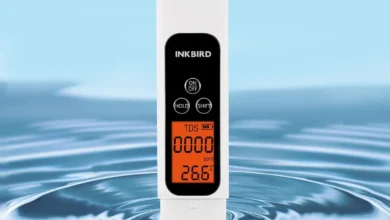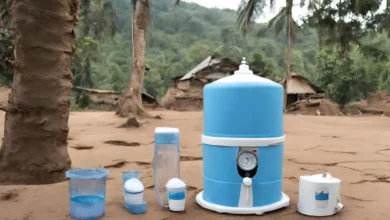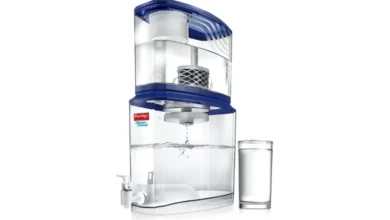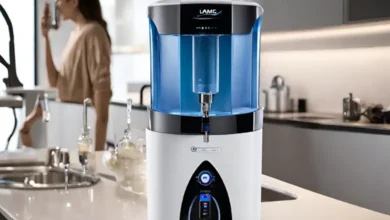Understanding the Intricacies of Reverse Osmosis Filtration

Reverse Osmosis (RO) is a powerful water purification process that has gained widespread popularity for its ability to produce clean and pure drinking water. In this comprehensive blog post, we will delve into the intricate workings of Reverse Osmosis filtration. From the basic principles to the components involved, and the applications of RO technology, this guide aims to provide a detailed understanding of how this process ensures the removal of contaminants, leaving you with water that meets stringent quality standards.
Also Read: Best Water Purifier Under 15000 In India
9 Best Water Purifier in India
I. Introduction to Reverse Osmosis
1.1 The Concept of Osmosis
To comprehend reverse osmosis, it’s essential to first grasp the concept of osmosis. Osmosis is the natural movement of water molecules across a semi-permeable membrane from an area of low solute concentration to an area of high solute concentration. This movement equalizes the concentration on both sides of the membrane.
1.2 Reverse Osmosis Defined
Reverse osmosis, as the name suggests, is the reversal of the natural osmotic process. In RO, pressure is applied to overcome the osmotic pressure, forcing water molecules to move from an area of high solute concentration to an area of low solute concentration through a semi-permeable membrane. The result is the separation of water from contaminants.
II. Components of Reverse Osmosis System
2.1 Semi-permeable Membrane
At the heart of every RO system is the semi-permeable membrane. Typically made of thin film composite (TFC) or cellulose acetate, this membrane allows water molecules to pass through while blocking contaminants such as bacteria, viruses, minerals, and other impurities.
2.2 Pressure Pump
To initiate the reverse osmosis process, a pressure pump is employed. This pump pressurizes the water, overcoming the osmotic pressure and facilitating the movement of water through the membrane.
2.3 Pre-filters
Before water reaches the membrane, pre-filters play a crucial role in removing larger particles, sediment, and chlorine. These pre-filters protect the membrane from damage and enhance the overall efficiency of the system.
2.4 Reverse Osmosis Tank
The filtered water is collected in a reverse osmosis tank. This tank stores the purified water until it is needed, ensuring a constant and readily available supply.
2.5 Post-filters
After leaving the tank, the water passes through post-filters to further refine its quality. These filters target any remaining impurities, odors, or tastes, delivering a final touch to the purified water.
III. The Reverse Osmosis Process
3.1 Pre-filtration Stage
The process begins with pre-filtration, where water from the source undergoes initial filtration to remove large particles and sediments. This step protects the RO membrane from potential damage.
3.2 Pressurization
Once pre-filtration is complete, the water is pressurized using a pump. The applied pressure is crucial for overcoming the osmotic pressure and driving the water through the semi-permeable membrane.
3.3 Separation in the RO Membrane
During this stage, the semi-permeable membrane acts as a barrier, allowing only water molecules to pass through while blocking contaminants. This separation is the core mechanism that ensures the removal of impurities from the water.
3.4 Collection in the RO Tank
Purified water is collected in the reverse osmosis tank, providing a reservoir of clean water for immediate use. The tank is designed to maintain water pressure and ensures a constant supply of purified water.
3.5 Post-filtration
Before reaching the faucet, the water undergoes post-filtration, where any remaining impurities or odors are removed. This final step ensures that the water delivered to the user is of the highest quality and free from any potential contaminants.
IV. Applications of Reverse Osmosis
4.1 Residential Water Purification
One of the most common applications of reverse osmosis is in residential water purification systems. RO systems are installed under kitchen sinks to provide households with a convenient and reliable source of clean drinking water.
4.2 Industrial Processes
Reverse osmosis finds extensive use in various industrial processes, including pharmaceutical manufacturing, food and beverage production, and electronics manufacturing. The high purity of water achieved through RO is essential for maintaining product quality and meeting industry standards.
4.3 Desalination
In regions with limited freshwater resources, reverse osmosis is employed for desalination. Seawater is subjected to the RO process to remove salt and other impurities, making it suitable for drinking and irrigation.
4.4 Medical Applications
RO technology is integral in medical settings where ultra-pure water is required for laboratory experiments, dialysis, and other medical applications. The ability to remove even the smallest contaminants makes RO a crucial component in healthcare.
V. Maintenance and Considerations
5.1 Regular Filter Replacement
To ensure the optimal performance of a reverse osmosis system, it’s essential to adhere to a regular filter replacement schedule. Pre-filters and post-filters should be replaced according to the manufacturer’s recommendations.
5.2 Cleaning the RO Membrane
Over time, the RO membrane may accumulate debris and contaminants. Periodic cleaning is necessary to maintain its efficiency. Manufacturers often provide guidelines on how to clean the membrane without causing damage.
5.3 Monitoring System Pressure
Monitoring the pressure within the RO system is crucial for identifying any issues that may affect performance. Regular checks and adjustments can prevent damage to components and ensure consistent water quality.
VI. Conclusion
In conclusion, reverse osmosis stands as a reliable and effective method for water purification. Understanding the detailed process, the components involved, and the diverse applications of RO technology empowers individuals and industries to make informed choices in achieving clean and pure water. Whether for residential use, industrial processes, or addressing water scarcity through desalination, reverse osmosis continues to play a pivotal role in ensuring access to high-quality water. Regular maintenance and consideration of system components are essential to maximizing the lifespan and efficiency of RO systems, ultimately contributing to a sustainable and healthy water supply.






